Last weekend has been the 2020 State of the Map conference – which did not take place like it was originally planned and as it has been conducted in the past years at a specific physical place (in this case Capetown, South Africa) but was done in a purely virtual distributed form across the internet.
I regard this change – forced by the pandemic situation we all struggle with these days in some form – as in a way a welcome disruption. Due to an outside event the powers-that-be have been forced to try something they would not have tried probably in many years to come otherwise.
The implementation of the virtual distributed conference as an afterthought on an originally planned physical single place event led of course to some flaws and inconsistencies in the practical setup and to not using the full potential of the virtual setting in all of its aspects. This is obviously owed a lot to the desire not to throw away work already done. The most obvious issue resulting from that approach is that the main conference program contained almost exclusively program items submitted by people under the original premise of a physical conference – or in other words: The chance to hold a talk at the virtual conference still depended on the willingness and ability of people to travel to South Africa and be there for the talk in person.
This means the conference in its program was not even remotely as diverse as it could have been it it had been set up as a distributed remote conference in the first place. This should IMO be kept in mind by everyone evaluating how SotM 2020 turned out.
I regard the whole event mostly as an experiment to test various techniques and methods and means of communication to have a virtual conference in the OSM context. This applies both to behind-the-scene infrastructure and the public interfaces. If the SotM WG documents and shares their findings publicly that could have use far beyond SotM for the OSM community.
Practical observations from the conference
The pads for collecting questions and comments on talks worked great. This is definitely a concept that could play a central role in future distributed conferences. Initially the questions were asked anonymously which has led in particular in case of Frederik’s talk to quite a lot of people making vile comments under the disguise of anonymity. It was later established that questions and comments should be signed. I also think that the use of pads could be extended to non-talk program items like self organized sessions.
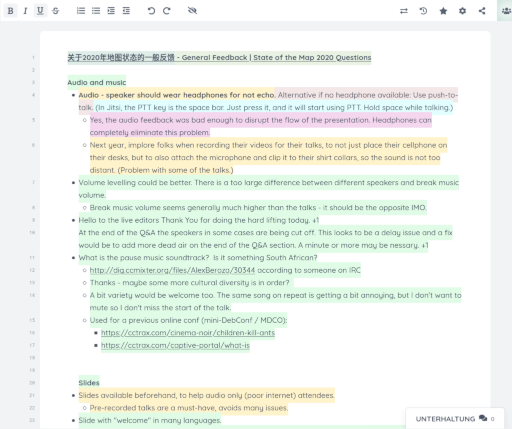
general feedback pad of the conference – there was a similar pad for questions and comments on each of the talks
The attractiveness of the pads to a large extent comes from the real time capability (which is essential for a real time conference obviously) combined with the non-linear free form structure of the text (which contrasts pleasantly with most other real time communication channels that tend to have a strictly linear structure).
There are quite a few things that could be improved about the audio. This starts with the levels of the pause music relative to the talk audio levels and continues with reverberations in poorly dampened rooms of some presenters and feedback noise in some people’s audio setup. That is mostly a matter of sufficient testing and experience with setting up and adjusting equipment in a way that works well. That takes time from everyone involved obviously. This is the hardest the first time but gets easier once you gain experience. And i am confident with the corona virus crisis incentivizing many people to gain more practice in remote communication knowledge and experience in this field is much improving every day. More communication about how to ensure good audio recording and communication quality within the community, sharing experiences and techniques used, would definitely be helpful.
None the less what also became clear to me during the conference is that the willingness of people to engage in communication was very clearly in the order written conversation > audio communication > video. I think this is an observation to consider for any audio or video conversation in the OSM context. Video meetings might be very convenient for heavily engaged extroverted community members with a pre-existing prominence but for many people this can be a source of discomfort. And cultural and language barriers can be strongly emphasized by use of real time audio and especially video communication.
Comments on the talks
I have not watched all the talks of the conference so this is more a list of anecdotal observations than a complete review. All the talks of the main conference program were pre-recorded while the Q&A after the talks were live. The pre-recorded talks offered a lot of options for presenters which would not be available in a live conference talk and which were used very differently by the presenters. Ilya in his talk Send me a Postcard IMO showed the most innovative approach to this. Watching this talk is recommended to anyone who in the future might be in the position to pre-record a conference talk as a positive example.
Some of the talks i watched so far that i consider particularly interesting:
Allan’s keynote Winds of Change in OpenStreetMap – While this did not provide much new information of substance to those following OSMF politics in general and who have read past statements from Allan on that subject, it seems to provide a valuable glimpse into the current mentality of the OSMF board regarding their work. Although Allan had a prominent disclaimer that these are his personal views and do not represent those of the board, it is quite clear from statements and actions of other board members that they see many of these things similarly. There is quite a lot of accurate analysis in the talk but also quite a few highly questionable selective perceptions, assumptions and conclusions. I might comment about some of those separately although it is not clear at this time if the board is currently willing to openly discuss the merits of their views and opinions on the OSM community and the future of the OSM project and on the OSMFs role and defend their views and conclusions on these matters in a public setting.
Frederik’s talk There might have been a misunderstanding… – As usual Frederik explains in a well understandable way many of the central aspects of the OpenStreetMap project which new contributors as well as data users often struggle with because they differ from what people are used to, either in other internet communities or in the world of geodata. Naturally, a lot of these frequently misunderstood aspects of OSM are also fairly controversial and this has – as hinted above – led to a lot of critical and in parts insulting comments on the talk by people who would like these things to change and for OSM to become more compatible with their expectations. What Frederik presents however is for the most part not wishful thinking – presenting how he would like OSM to be – but how OpenStreetMap actually works and functions based on knowledge derived from many years of practical involvement in the project. Other long term participants will largely be able to confirm that. So whether you like these aspects of OSM or not and in what direction you might want OSM to develop in the future this is a very useful talk to watch to understand how OpenStreetMap ticks.
Mikel’s talk An Incomplete History of Companies and Professionals in OpenStreetMap – Essentially Mikel is painting corporate activities in OSM and their history in rosy colors while saying: just pay no attention to all the skeletons lying around here. A lot could be criticized about selective presentations of facts as well as factual and logical errors or about the technique of jokingly dismissing and ridiculing differentiated philosophical critique of the influence of corporate interests in OSM. Anyway – I think this is a valuable talk to watch to get a glimpse into the mindset of many corporate employees involved in OSM as part of or in relation to their job.
Janet’s talk Building mapping communities in rural Tanzania – challenges, successes and lessons learnt – I found this interesting because of a certain observation. In the beginning a number of specific non mapping related examples are shown of aid being given to people in rural areas of Tanzania for everyday life problems. And emphasis is admirably given to helping locals solving these problems themselves in a sustainable and independent fashion using locally available means. Yet when it comes to mapping and digital technology the same initiative (and from what i know also many other humanitarian mapping projects) critiquelessly rely on commercial services and proprietary tools and encourage locals to use and rely on those services and tools that increase and perpetuate dependence of local people on non-local corporations for their local mapping work instead of educating people in using open source technology and tools they can manage and control themselves.
To be clear, i am not at all saying that this talk in any way constitutes an example for particularly bad practice in that regard, on the contrary the examples shown illustrate a principal awareness of the issue that is missing elsewhere. But to me it demonstrates quite well how fundamentally different measures are applied to the goal of supplying aid in a way that enables locals to solve serious problems in a sustainable fashion outside the digital world and within it.
Ilya’s talk Send me a Postcard – I mentioned his talk already above as an example for making innovative use of the possibilities pre-recorded talks offer. Beyond that this talk is also recommended because Ilya has, more than most other prominent figures in the OSM community, a realistic appraisal of the challenges of inter-cultural communication in the OSM community.
Susanne’s talk Analyzing the localness of OSM data – this was one of the talks of the academic track which i found intriguing because it discusses a bit about how to thoroughly approach a subject from a scientific perspective – critically evaluating the concepts you intend to study in your research (here the localness of data and contributions in OSM) and defining the terms you use before you actually engage in studies. It does not present much in terms of actual results so this initial and highly important part of scientific work plays a prominent role in the talk. Like most scientific works analyzing OpenStreetMap in some form this also does not question the scientific profession’s own preconceptions (prominently manifested in the unquestioned assumptions that there has to be an inherent advantage in geodata collected by professionals compared to collection by hobby craft mappers) but it otherwise shows a thorough and open approach to the subject. Knowing the economic constraints of institutional scientific research these days i don’t have high hopes that the ambitious plans sketched in the presentation will be implemented without shortcuts being taken that devalue the results. But the willingness to be thorough is visible.
Looking into the future of distributed OSM conferences
In my opinion this conference – which as explained i regard as kind of an experiment – shows a bit on how much unused potential exists in the idea of a distributed conference. If this potential is being used in the OSM context in the long term significantly depends on how much the OSMF, the SotM working group and both the wealthy and influential international OSM jet set as well as the traditional corporate supporters of SotM conferences are willing to abandon the dear tradition of expensive and wasteful flying around the world to meet at a single place in large numbers in favor of trying out new and more inclusive possibilities.
A few further ideas on what possibilities a virtual conference format could offer beyond what has been tried this year:
In a distributed conference the hurdle to submit a talk proposal would be much lower because it does not require a commitment to make an expensive travel to the conference location. I can already imagine people fearing the program committee might be drowned in submissions. The solution to that is to not think of this in terms of a physical conference. You don’t actually need to make a pre-selection of talks based on abstracts submitted, you can let people simply submit their pre-recorded talks. That would require more effort on the side of a presenter than submitting a bloomy abstract which would filter out any non-serious submissions. And assessing a talk based on scrolling through the video for a few minutes is much fairer than doing so based on just an abstract. So having the program committee select talks rather than abstracts is likely the better and fairer option for a virtual conference. Alternatively you could skip the selection of talks altogether and simply make all submissions accessible to the conference visitors. After all a virtual conference is not subject to the physical limitation of available rooms. That you might not necessarily be able to offer a moderated live Q&A for all talks is clear – but there are options to solve that with some creativity.
The other idea is that a virtual distributed conference might be set up not only removing the constraint to a specific place but also spread out the conference in the time domain. Time zone differences are a serious issue with an international real time online conference – this could be observed at SotM 2020 quite well. So why not forego squeezing the conference into two days but instead spreading it across something like one or two weeks. A few days before the beginning of the actual real time part of the conference you make available the pre-recorded videos for everyone to watch at a time of their choosing. And they have the option to comment and ask questions asynchronously then. The speakers of the talks then have also some time to consider the questions and comments carefully before there is a moderated real time video session where the written feedback is discussed and further real time discussion is possible. The whole thing could be wrapped up by an integrated mechanism to allow speakers to provide some followup to the discussion in the days afterwards.

Allan (with Gregory as moderator) during his self organized Q&A session
With Allan’s keynote we had already a demonstration during this conference giving a bit of a glimpse on how this might work. There was no Q&A immediately after the talk but there was a longer Q&A later in the evening in form of a self organized session. Conference visitors in addition to asking questions during the talk streaming could afterwards for several hours re-watch the talk using the re-live feature and ask further questions and make comments. It was a bit unfortunate that Allan did not have more time to more carefully read the questions and prepare more elaborate answers which could have been the basis for a more interesting live discussion or later followup comments. But overall i think it was already visible how a more slowly paced dialog between presenters and visitors of the conference could facilitate a more productive and meaningful discourse.
To wrap up this blog post two more things: I consider it a fortune that with moving the conference to a distributed setting the scholarship program was scuttled for this year. From what i have heard the selection has already been completed and was conducted more or less like in past years despite the fundamental issues i pointed out before without any increase in problem awareness being visible in the OSMF. Had the scholarship program been actually gone through and again several ten thousand Euros of OSMF money been spent under questionable circumstances like this i would have felt compelled to completely boycott the conference because of that.
For future distributed conferences (no matter if they have a non-virtual component or not) it should be fairly obvious (and others have pointed this out) that with the money in the past spent on financing questionable short term travel around the world for a handful of selected individuals a lot more people (likely a factor of 10 to 100 more!) could be enabled in participating in the conference by spending a similar amount of money to finance access of people all around the world to digital communication bandwidth and equipment to participate in the conference remotely. That can take the form of subsidizing mobile data packages for individuals for the duration of the conference or things like renting a conference room with high bandwidth internet for a local group of mappers – many options would be possible here.
Finally i want to applaud the organizers for building the whole setup of the distributed conference mostly on open source software and open platforms. As it has been pointed out there is still room for improvement here by not prominently featuring proprietary communication platforms like Twitter, Telegram and Slack but the intention and commitment to be open on the core infrastructure is well visible. This is admirable especially considering not all events in the OSM world or even the FOSS world that have been moved to a virtual setting due to corona show such a commitment.
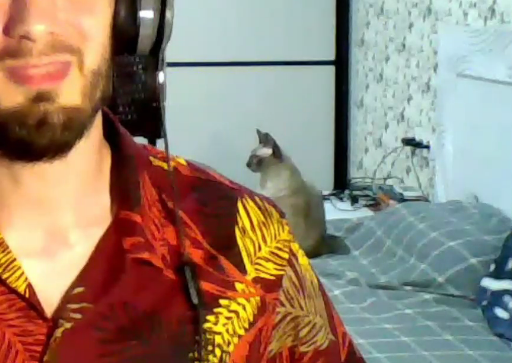
It would not be the internet without cat content – Ilya’s cat is making an appearance

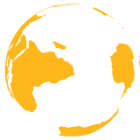
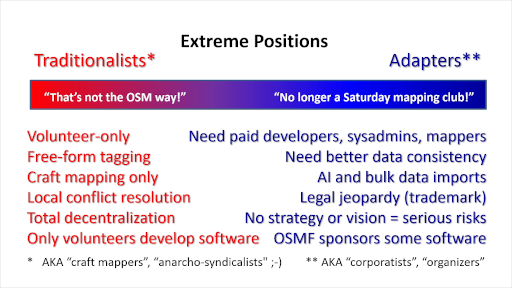
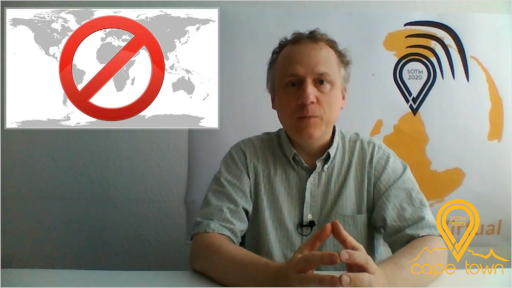
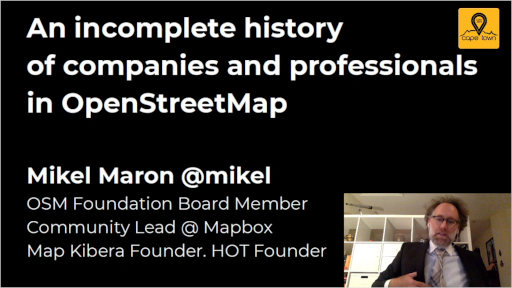

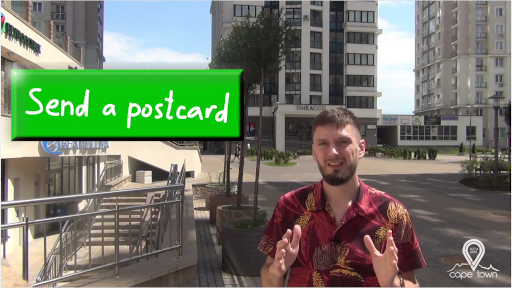

September 24, 2020 at 06:35
Hi imagico! Just wanted to say thank you for this most useful feedback, I agree on all points regarding how to organise virtual events, and think very much that this should become the default way of organising conferences.